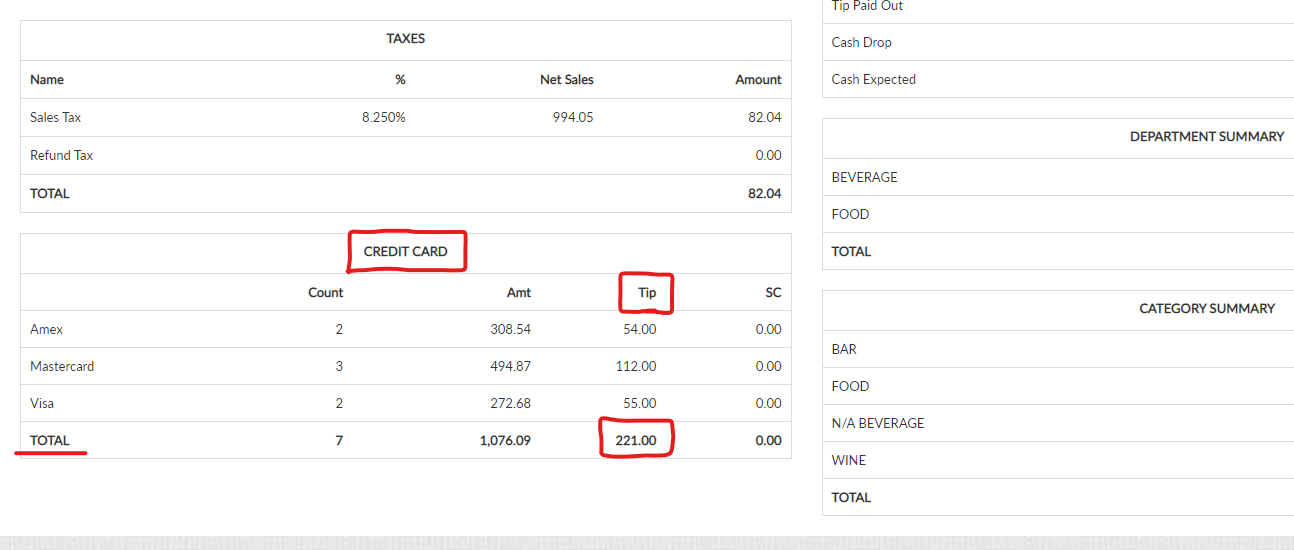Business Profile Form
/in Uncategorized /by NextEraPOSNextera Payments Processing Application
The 5 Must-Track KPIs for Every Restaurant Owner
/in Blog /by NextEraPOSRunning a successful restaurant requires a blend of gastronomical passion and sharp business acumen. One of the ways to keep your finger on the pulse of your restaurant’s health is by monitoring key performance indicators or KPIs. These are metrics that provide actionable insights into different aspects of your business. While various factors can influence your restaurant’s operations, here are the top five KPIs every restaurateur should keep an eye on:
1. Average Sales Per Cover (or Per Guest)
- What It Measures: The average amount each guest spends during their visit.
- Formula: Total Sales ÷ Total Number of Guests
- Why It’s Important: This metric sheds light on your menu pricing strategy and customer purchasing habits. Witnessing a decline? Time to rethink your promotions or menu items.
2. Table Turnover Rate
- What It Measures: The frequency with which tables are occupied and vacated.
- Formula: Total Guests ÷ Total Number of Tables
- Why It’s Important: A high turnover suggests good demand and efficient service. On the flip side, it could indicate that guests feel rushed. A low rate? Your guests might be enjoying their time, or there could be service inefficiencies.
3. Cost of Goods Sold (COGS)
- What It Measures: The direct costs tied to creating the dishes and drinks you serve.
- Formula: (Beginning Inventory + Purchases) – Ending Inventory
- Why It’s Important: A critical metric for understanding profit margins. An unexpectedly high COGS can be a red flag for issues like waste, theft, or even supplier challenges.
4. Labor Cost Percentage
- What It Measures: The proportion of your sales that goes towards labor costs.
- Formula: Total Labor Cost ÷ Total Sales
- Why It’s Important: Labor often eats up a significant chunk of a restaurant’s expenses. This KPI helps you assess your staffing levels against your sales, ensuring you’re neither overstaffed nor understaffed.
5. Net Profit Margin
- What It Measures: A snapshot of your restaurant’s financial health.
- Formula: (Total Revenue – Total Expenses) ÷ Total Revenue
- Why It’s Important: This metric provides a clear picture of how much of your earnings remain after covering all costs. A high margin is always a good sign, but a low one suggests there might be underlying issues to address.
In Conclusion: While each KPI offers valuable insights, they should always be considered in tandem and in context. No single KPI can give a comprehensive overview, but together, they paint a vivid picture of where your restaurant stands and where it could head. So, roll up your sleeves, dive into these metrics, and steer your restaurant towards success!
Choosing the Perfect POS System for Your Restaurant: A Comprehensive Guide
/in Blog /by NextEraPOSIntroduction:
Are you a restaurant owner on the hunt for the ideal Point of Sale (POS) system to supercharge your operations? Look no further! In this comprehensive guide, we’ll delve into the key features you should consider when choosing a POS system, while shedding light on why a locally owned and operated provider might be the better choice over the most popular option. Let’s dish out the details!
- Know Your Style and Menu
When it comes to selecting the right POS system, it’s crucial to match your restaurant’s style and menu. Whether you’re a trendy bistro with a diverse menu or a cozy café specializing in comfort food, finding a POS system that complements your unique offerings is the recipe for success.
- User-Friendly and Intuitive Interface
A user-friendly POS system is like a well-seasoned pan – it makes cooking (and in this case, transactions) a breeze! Look for an intuitive interface that simplifies order taking and payment processing, allowing your staff to focus on what matters most – delivering delightful dining experiences.
- Flexibility for Diverse Ordering Options
In the ever-evolving restaurant landscape, flexibility is the secret ingredient to success. Ensure your chosen POS system accommodates various ordering options such as dine-in, take-out, delivery, and catering. Adaptability is the key to satisfying even the pickiest palates.
- The Magic of Data – Reports and Analytics
Just like a skilled chef relies on precise measurements, your restaurant needs data-driven insights. Choose a POS system that serves up comprehensive reports and analytics, enabling you to make informed decisions, track performance, and optimize your business for growth.
- Mix and Match with Seamless Integrations
No dish is complete without the perfect side dishes. Similarly, a well-rounded POS system should integrate seamlessly with other tools, like payment processors, loyalty programs, and inventory management systems. A harmonious blend of integrations enhances efficiency and streamlines operations.
- The Unique Advantages of Going Local
While the popular choices might grab attention, don’t underestimate the charm of a locally owned and operated POS provider. By supporting local businesses, you gain personalized attention, tailored solutions, and faster, more attentive customer support. It’s like having a trusted kitchen buddy who understands your restaurant’s needs inside out!
Conclusion:
Choosing the perfect POS system is akin to crafting a masterpiece in the kitchen – it requires careful consideration, experimentation, and the perfect blend of ingredients. Take the time to explore various options, and remember that a locally owned and operated provider can offer the secret sauce that sets your restaurant apart.
With the right POS system in place, your restaurant will thrive, delivering unforgettable dining experiences to satisfied customers. So, embark on this culinary adventure, armed with the knowledge to find the perfect POS system that elevates your restaurant to new heights. Bon appétit and happy POS hunting!
Outbound Links:
- National Restaurant Association: Stay updated with industry trends and insights from the leading association for the restaurant industry.
- Bar Business Magazine: Get valuable tips and advice for bar owners and operators in this industry-focused magazine.
Internal Links:
- NexteraPOS: Check out NexteraPOS for cutting-edge POS solutions tailored to the restaurant and bar industry.
Cash Discount Programs: Boosting Retail and Hospitality Businesses
/in Blog /by NextEraPOSIn the bustling sectors of retail and hospitality, profit margins can sometimes be slim. With the continuous evolution of payment methods, it’s essential for businesses to adapt strategies that not only serve their customers efficiently but also protect their bottom line. One such strategy that’s gaining momentum is the Cash Discount Program. But what exactly is it, and how can it benefit businesses in the retail and hospitality sectors?
What is a Cash Discount Program?
A Cash Discount Program is a method where businesses offer a discount to customers who choose to pay with cash instead of credit or debit cards. In essence, it shifts the responsibility of handling card processing fees from the business owner to the customer, unless the customer opts to pay in cash.
Key Benefits of Utilizing a Cash Discount Program:
- Reduced Processing Fees:
- Card transactions come with processing fees, which can accumulate significantly over time. By incentivizing cash payments, businesses can reduce these fees, leading to considerable savings.
- Enhanced Cash Flow:
- Cash payments mean immediate funds in hand. This can greatly improve a business’s cash flow, ensuring they have the necessary resources for day-to-day operations.
- Simplified Accounting:
- Cash transactions can simplify the accounting process. Without the need to track card settlements or deal with chargebacks, bookkeeping becomes more straightforward.
- Speedy Transactions:
- Especially in the hospitality industry, where speed is crucial during peak hours, cash transactions can be quicker than waiting for card authorizations.
- Reduced Risk of Fraud and Chargebacks:
- Cash payments eliminate the risk of credit card fraud and the hassles of chargebacks. In industries where margins are tight, avoiding these pitfalls can be invaluable.
- Transparent Pricing:
- With a Cash Discount Program, customers always know what they’re getting. There’s clarity in pricing, with the cost being lower if they choose to pay in cash.
- Customer Incentives:
- Everyone loves a discount! By offering tangible savings for cash payments, businesses can enhance customer loyalty and encourage repeat visits.
- Decreased Dependency on Banks:
- By handling more cash transactions, businesses can reduce their dependency on banks and card processors. This can be especially beneficial during banking downtimes or disruptions.
How to Implement a Cash Discount Program:
- Clear Communication: Ensure that customers are aware of the program. Use clear signage and train staff to explain the benefits to customers.
- Stay Compliant: Understand the regulations surrounding cash discount programs in your jurisdiction to ensure you’re not inadvertently surcharging or violating any laws.
- Regularly Review: Analyze the program’s effectiveness regularly. Look at the uptake, customer feedback, and financial benefits.
Conclusion:
While cash discount programs may not be suitable for every business, they offer undeniable benefits, especially in the retail and hospitality sectors. By reducing costs, simplifying processes, and offering incentives to customers, these programs can be a win-win solution in an ever-evolving financial landscape.
The Impacts of Choosing National Over Local: Why Your Local Business Choices Matter
/in Blog /by NextEraPOSLocal businesses play a pivotal role in shaping the economic and social fabric of communities. They invigorate local economies, foster community spirit, and provide unique goods and services that often can’t be matched by national or multinational corporations. However, there’s a current trend of consumers defaulting to the convenience and ubiquity of nationally popular companies at the expense of local businesses. This shift can lead to significant damage to local economies. Here’s why:
- **Job Loss and Economic Decline**
Local businesses are substantial job creators. According to the Small Business Administration (SBA), small businesses account for 64% of new private-sector jobs. When consumers choose larger corporations over local businesses, they jeopardize these job opportunities. The demise of local businesses often leads to increased unemployment rates, income inequality, and an overall decline in economic activity.
- **Weakening Local Tax Base**
Local businesses contribute significantly to the local tax base. Taxes paid by local businesses fund vital public services and infrastructure such as schools, parks, and roads. By diverting sales to larger corporations, often located out of town or out of state, local jurisdictions miss out on these essential tax revenues. This can lead to a decline in public services and a deterioration of community infrastructure.
- **Reduction in Community Wealth**
Local businesses are more likely to recycle a much larger share of their revenue back into the local economy, enriching the whole community. On the other hand, larger companies tend to extract local wealth, transferring it to their headquarters or to shareholders who may be located in other parts of the world. By choosing popular corporations over local businesses, consumers inadvertently reduce the overall wealth within their communities.
- **Standardization over Diversity**
Local businesses contribute to the unique character and vibrancy of a community. They often provide products and services tailored to the local community’s tastes and needs. Large corporations, by contrast, offer standardized goods and services aimed at a wide, generalized audience. As consumers choose these companies over local businesses, it can lead to a homogenization of offerings, reducing the diversity and uniqueness of our communities.
- **Sustainability Concerns**
Lastly, by supporting local businesses, consumers help foster a more sustainable local economy. Local businesses, especially those in the food sector, often have shorter supply chains, meaning lower carbon emissions. Furthermore, many local businesses are integral parts of their communities and therefore more accountable to local issues, including sustainability. Large corporations, by contrast, can contribute to longer supply chains and potentially less sustainable practices.
In conclusion, while large, nationally popular companies may offer convenience and familiar products, the cost to local economies can be high. As consumers, our choices directly impact our communities’ economic health, social vibrancy, and sustainability. Choosing to support local businesses can lead to job creation, a stronger tax base, increased community wealth, greater product diversity, and more sustainable practices. It’s a choice that benefits not just the individual consumer, but the entire community.
Local businesses play a pivotal role in shaping the economic and social fabric of communities. They invigorate local economies, foster community spirit, and provide unique goods and services that often can’t be matched by national or multinational corporations. However, there’s a current trend of consumers defaulting to the convenience and ubiquity of nationally popular companies at the expense of local businesses. This shift can lead to significant damage to local economies. Here’s why:
- **Job Loss and Economic Decline**
Local businesses are substantial job creators. According to the Small Business Administration (SBA), small businesses account for 64% of new private-sector jobs. When consumers choose larger corporations over local businesses, they jeopardize these job opportunities. The demise of local businesses often leads to increased unemployment rates, income inequality, and an overall decline in economic activity.
- **Weakening Local Tax Base**
Local businesses contribute significantly to the local tax base. Taxes paid by local businesses fund vital public services and infrastructure such as schools, parks, and roads. By diverting sales to larger corporations, often located out of town or out of state, local jurisdictions miss out on these essential tax revenues. This can lead to a decline in public services and a deterioration of community infrastructure.
- **Reduction in Community Wealth**
Local businesses are more likely to recycle a much larger share of their revenue back into the local economy, enriching the whole community. On the other hand, larger companies tend to extract local wealth, transferring it to their headquarters or to shareholders who may be located in other parts of the world. By choosing popular corporations over local businesses, consumers inadvertently reduce the overall wealth within their communities.
- **Standardization over Diversity**
Local businesses contribute to the unique character and vibrancy of a community. They often provide products and services tailored to the local community’s tastes and needs. Large corporations, by contrast, offer standardized goods and services aimed at a wide, generalized audience. As consumers choose these companies over local businesses, it can lead to a homogenization of offerings, reducing the diversity and uniqueness of our communities.
- **Sustainability Concerns**
Lastly, by supporting local businesses, consumers help foster a more sustainable local economy. Local businesses, especially those in the food sector, often have shorter supply chains, meaning lower carbon emissions. Furthermore, many local businesses are integral parts of their communities and therefore more accountable to local issues, including sustainability. Large corporations, by contrast, can contribute to longer supply chains and potentially less sustainable practices.
In conclusion, while large, nationally popular companies may offer convenience and familiar products, the cost to local economies can be high. As consumers, our choices directly impact our communities’ economic health, social vibrancy, and sustainability. Choosing to support local businesses can lead to job creation, a stronger tax base, increased community wealth, greater product diversity, and more sustainable practices. It’s a choice that benefits not just the individual consumer, but the entire community.
Adding an Employee
/in Training /by NextEraPOSAdding an Employee with Payroll:
Select “User Management”, “Users”, “+Add”
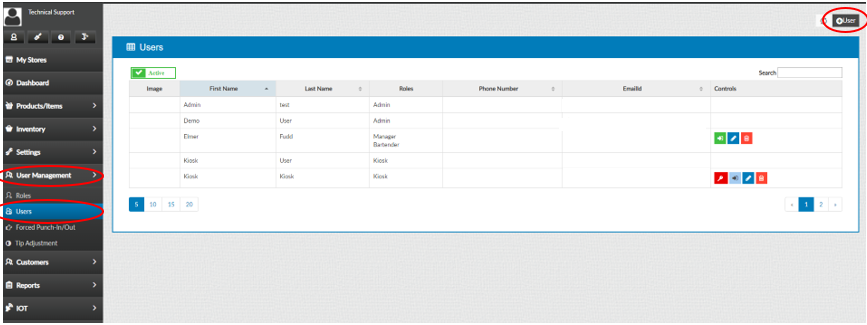
After filling out the employee information select the “Next” button
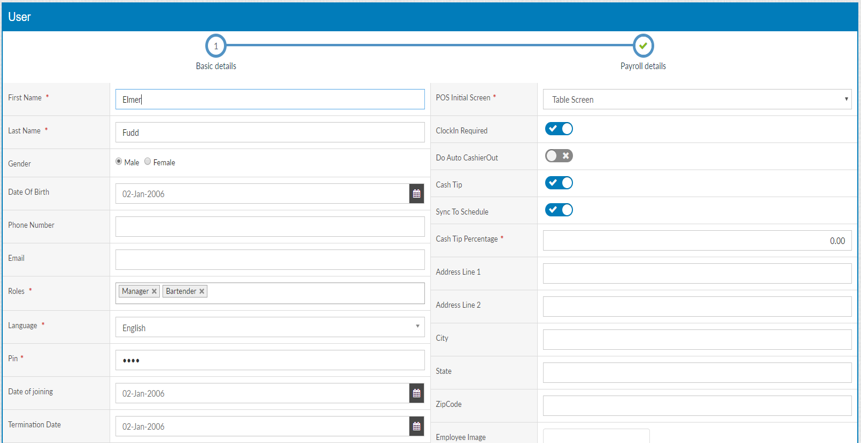
Select “+Payments”

Select how the employee will receive their wage
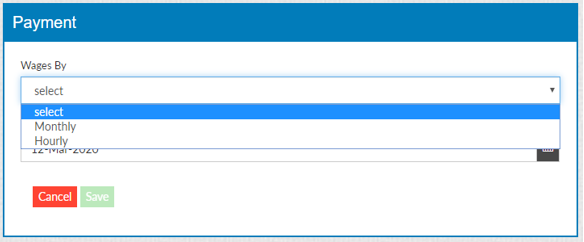
Select what date the wage is effective and hourly salary and select “Save”
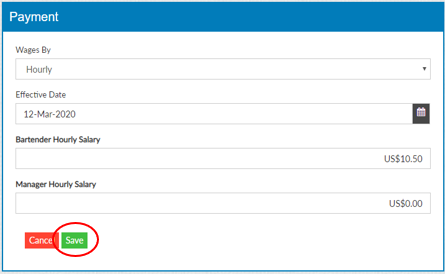
Payment Added

Splitting Ticket-Split Check
/in Training /by NextEraPOS- After selecting the ticket to split check. Select the grey/black split arrow button, located in the lower left area of the screen next to ‘Total’ & ‘Paid Amount’.
- Select ‘SPLIT CHECK’ DO NOT select ‘SPLIT BY SEAT’
- Select ‘Add’ in upper right area of screen to create however many ways you want to split the check. This example we will do 4. ‘Split by seat’ will also add a ‘Check’ column, but only once.
- If you need to separate items from the main check onto a different check for someone to pay separately, then you will select ‘Split by seat’, located in the lower left area of the screen. This will create a new column labeled ‘Check’, to where you will move the items you wish to have paid out separately.
- Select the item(s) you wish to move over. ‘SEPARATE ITEM’ should only be used if you wish to split an item into however many ways you wish. To do this, select the item you wish to split, then select ‘Separate Item’, then select the number of times you wish it to be split. This will auto split the item in the column with number of times it is split. You can move these items to wherever they need to go for the split check.
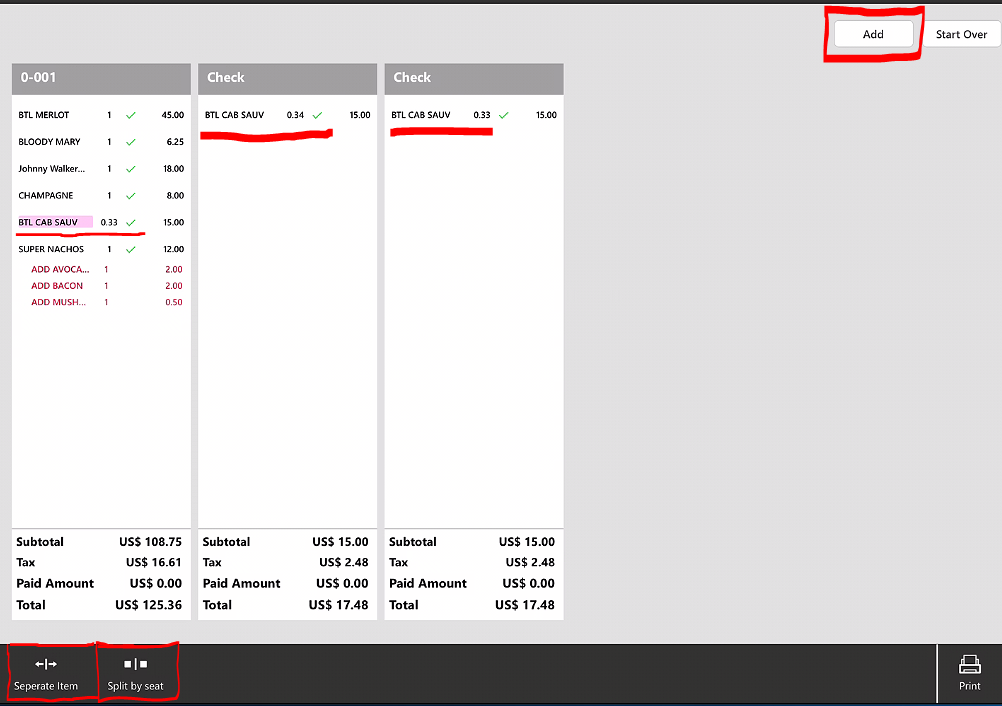
6. Select ‘Save & Close’. This will return you to the ordering screen. If you messed up or you need to put these back together, go back to the table layout screen. Select ‘Merge’ in the lower left area of the screen. Then select the table you had the separate checks on & select all the separate checks. This will auto populate the area on the right under ‘Merge Checks’, then hit done. This will put all the separate checks back together.
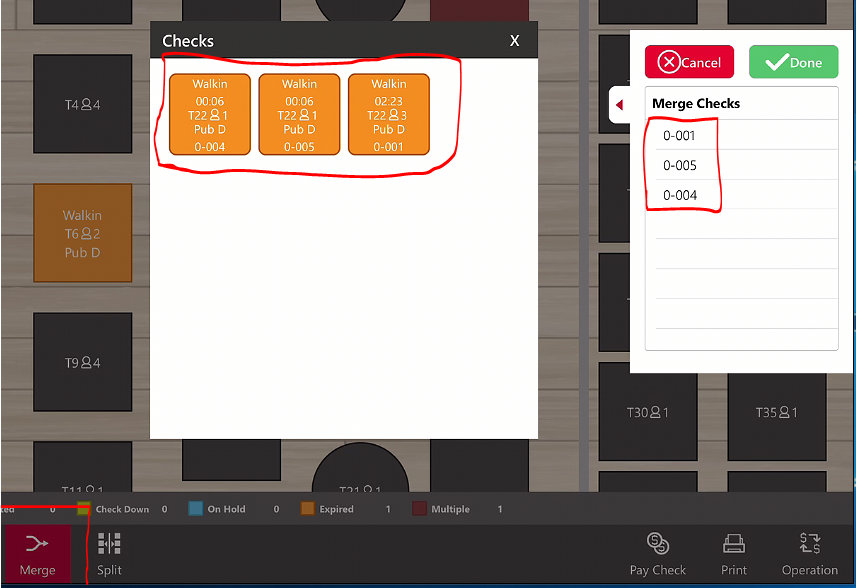
7. IF you did not mess up & need to close out the ticket(s), select the check that needs to close out & continue with the payment process.
Credit Card Tips Report Guide
/in Training /by NextEraPOS- Open internet browser & go to https://nexterapos.upos.io/#/login
- Enter &/or make sure credentials are correct then use mouse to left click on blue circle check mark.
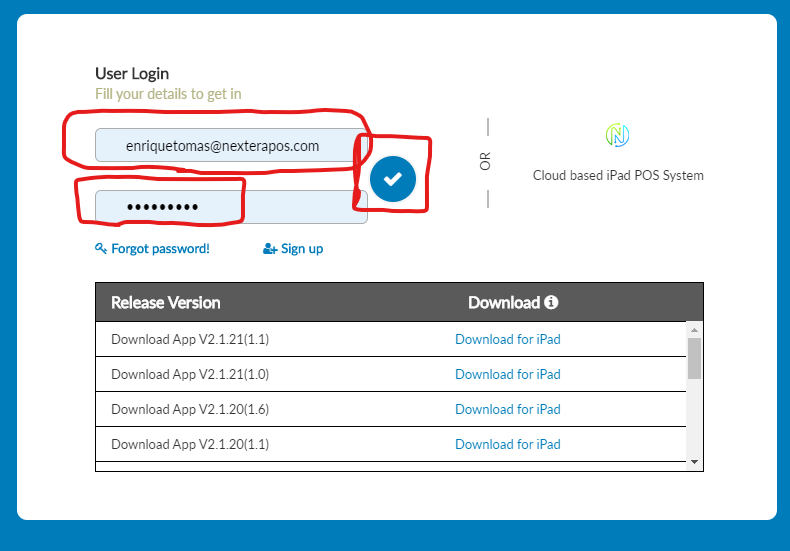
3. Click on Reports in the left column.
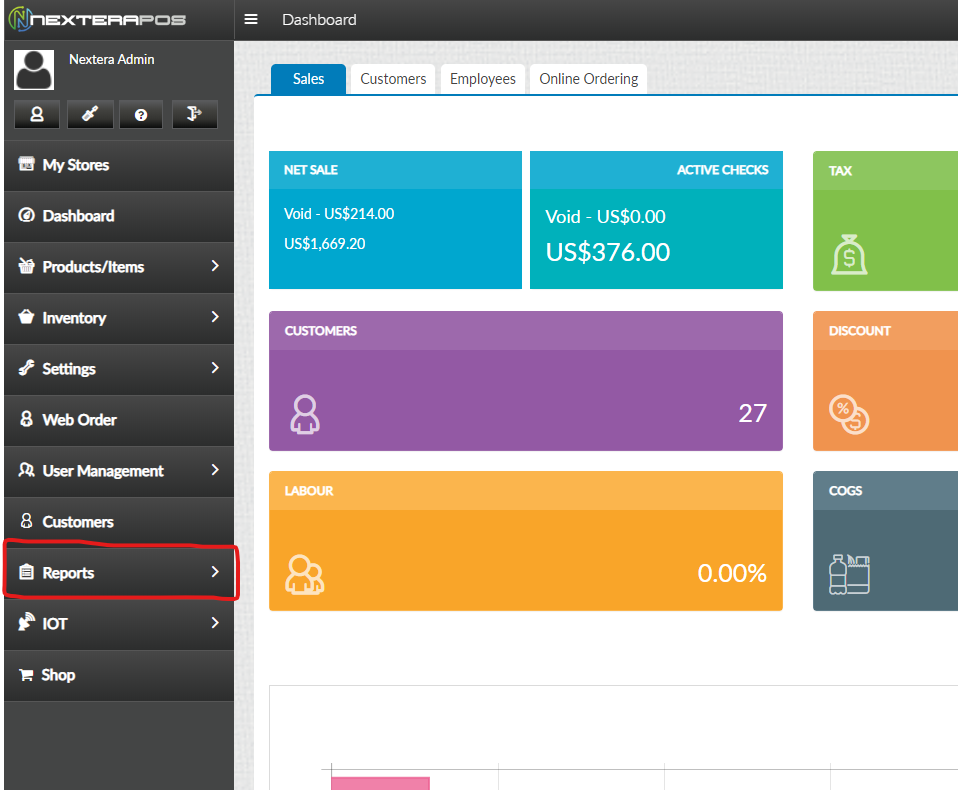
4. Select Sale in the drop down column after selecting Reports.
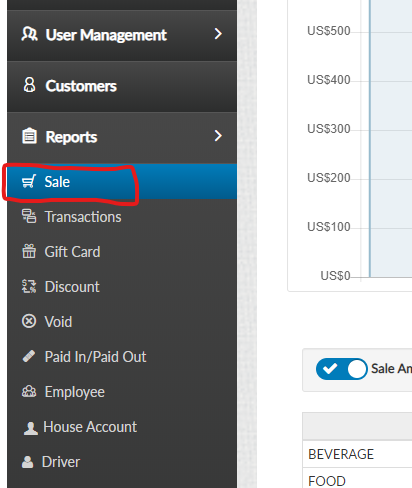
5. Click on the Cashier Out tab on the top blue row.

6. Under Report Type, select Detailed Report in the drop down option. Only select the One Page PDF if that is what you need. (One Page PDF might be suitable for if you were trying to print the report)

7. Select the desired time/day from the Time Period drop down menu. You can select multiple days by selecting Date Range or a specific day by selecting Specific Date. Select the desired day in the calendar option & then select the green close button.

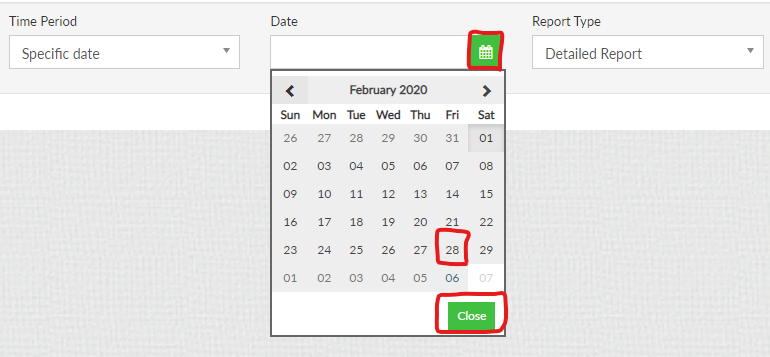
8. If you want a sales & tip report for all employees, select the run option. This will give you the total sales & tip figures for all employees who worked during that day or the days selected.

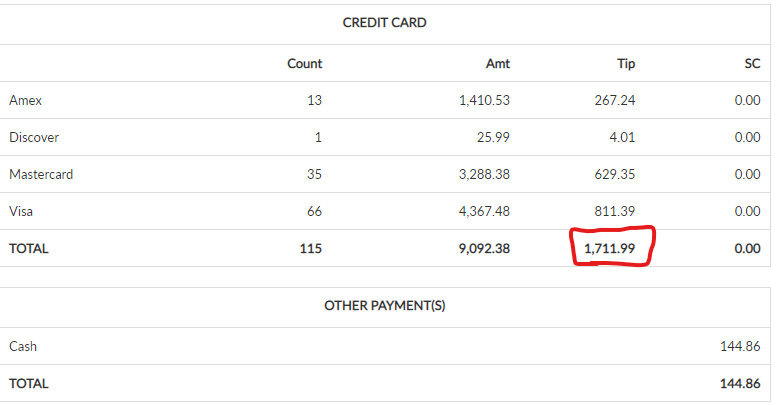
9. Select employees from Employee drop down menu to review each individual sales & tip report. Then click the green Run button.
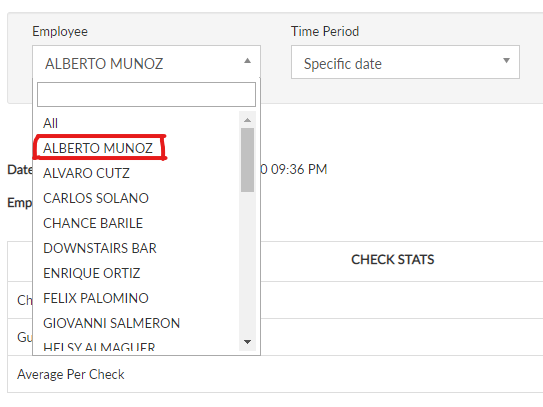

10. Scroll down and look at the Tip Total under the CREDIT CARD box. This is where you can review each individual Credit Card Tip total for each server &/or bartender who worked during that day or days. Repeat steps 9 & 10 to review however many employees total credit card tips that you wish to see.
